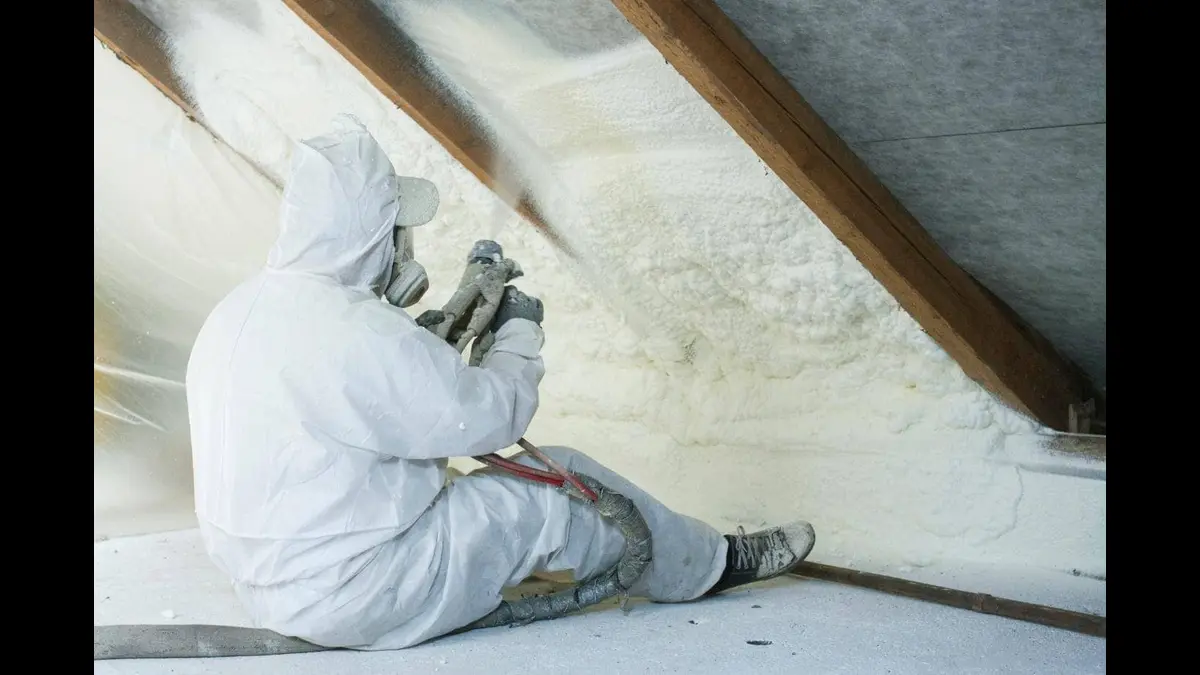Spray foam polyurethane is a popular choice for both residential and commercial insulation because it is good at insulating, does not harm the environment, and can be used in many ways.
This in-depth guide will go over the pros, cons, and installation process of polyurethane spray foam to help you understand why it is one of the best insulating materials on the market right now.
Understanding Polyurethane Spray Foam
Polyurethane spray foam is made from organic polymers and is made up of two parts: an isocyanate and a polyol resin blend.
Once these parts are mixed together, they react and expand, creating an insulating material with great sound and heat insulation and increased strength. Polyurethane spray foam is good for the environment, which is one of its main benefits.
The blowing agents do not have any chemicals that damage the ozone layer, and the foam’s parts come from natural, renewable sources. This foam is also long-lasting and will not break down over decades, which adds to its eco-friendliness.
Types of Polyurethane Spray Foam
Polyurethane spray foam insulation comes in following main types:
Closed-Cell Spray Foam – This variant is denser and better at blocking heat transfer, providing thermal insulation in addition to improving structural support of the application area. It is waterproof, making it suitable for areas prone to flooding and wind-driven rain.
Open-Cell Spray Foam – Less dense than closed-cell foam, open-cell spray foam is flexible. This makes it suitable for insulating attics, floors, and walls where movement or vibration might be common. It expands up to 100 times its original size. That makes it convenient to fill nooks and crannies and reduce heat loss, prevent drafts. Open-cell foam is also great at blocking out airborne noise.
Applications of Spray Foam Insulation
1. Roof and Loft Insulation:
Spray foam works really well for keeping roofs and attics warm. It prevents heat escape, reducing energy costs, and unlike traditional insulation, it does not compromise the usability of the loft space.
2. Cavity Wall Insulation:
Spray foam is injected into cavity walls to create a better seal than traditional materials. This keeps the inside warm and stops air from leaking in.
Installation Process
The installation of spray foam insulation should always be performed by professionals. This is for a job well done, safely.
Here’s a general overview of the process:
- Initial Assessment: An accredited installer will survey the property to narrow down the most suitable type of foam and the specific needs of the space.
- Risk Assessment: Before installation a detailed risk assessment is set up to be sure all safety protocols are in place.
- Application: Specialized equipment such as airless sprayers or mobile rigs is used to apply the foam precisely and evenly.
- Post-Application Checks: After installation, the area is inspected for consistency and quality, and a fire safety test is conducted.
- Post-Installation Support: Installers provide ongoing support and advice to be certain the insulation performs optimally over time.
Domestic and Commercial Use
Domestic:
In homes, spray foam insulation can be used in attics, walls, basements, and under-floor voids.
It is sound at preventing heat transfer, airtight, moisture-resistant, and durable, making it a model choice for more energy-efficient homes.
Commercial:
Spray foam insulation helps keep commercial buildings like office buildings and warehouses at a comfortable temperature, lowers heating costs, and blocks out noise.
Because it works so well in harsh conditions, it is also used in specialized applications like cold storage units.
Bottom Line
A lot of different types of insulation can be done with polyurethane spray foam insulation, which is reliable, effective, and safer for the environment.
With professional installation, this insulation can give you long-term benefits – a smart investment for any property owner.
For more information, visit:

